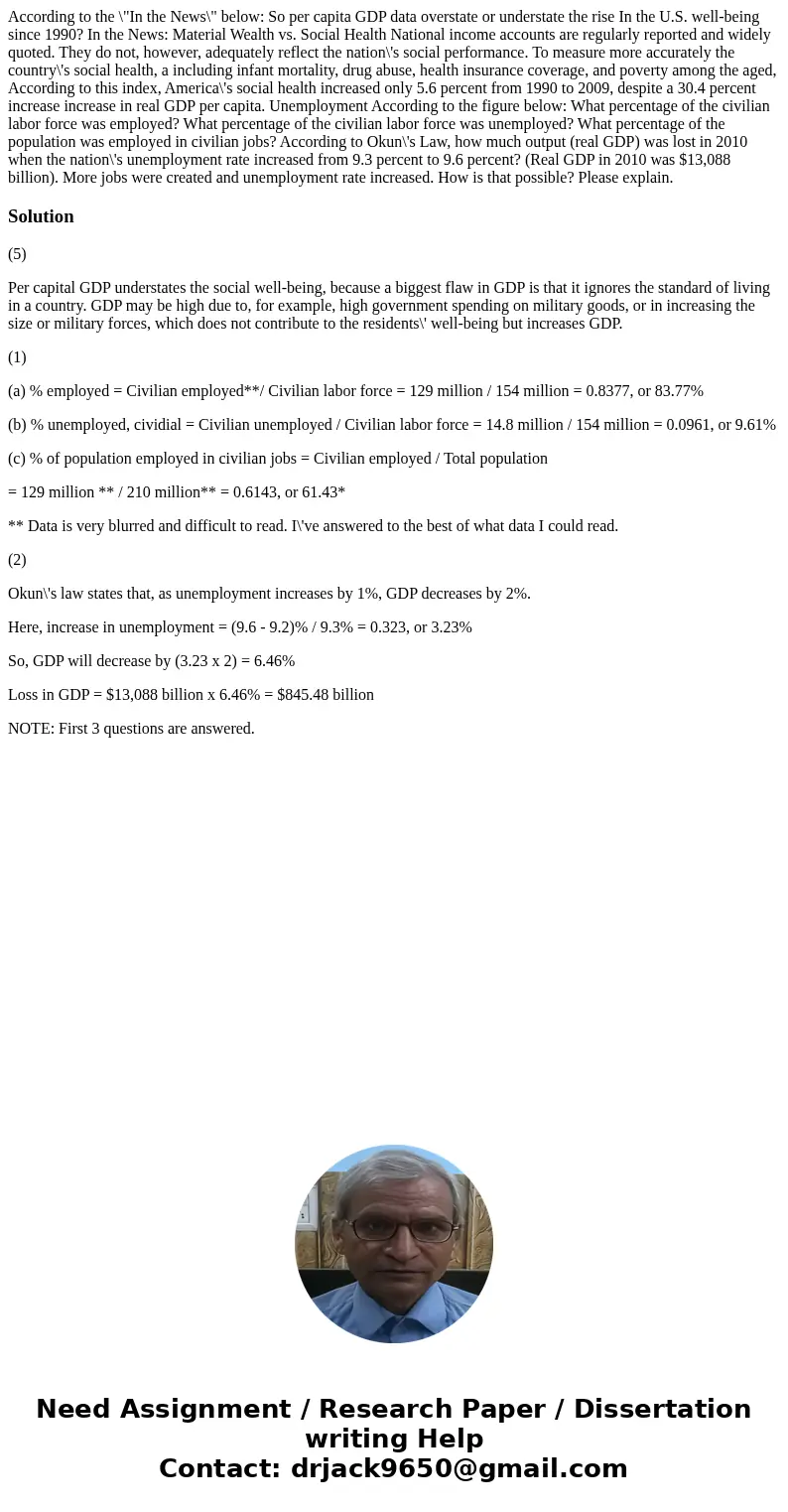According to the In the News below So per capita GDP data ov
Solution
(5)
Per capital GDP understates the social well-being, because a biggest flaw in GDP is that it ignores the standard of living in a country. GDP may be high due to, for example, high government spending on military goods, or in increasing the size or military forces, which does not contribute to the residents\' well-being but increases GDP.
(1)
(a) % employed = Civilian employed**/ Civilian labor force = 129 million / 154 million = 0.8377, or 83.77%
(b) % unemployed, cividial = Civilian unemployed / Civilian labor force = 14.8 million / 154 million = 0.0961, or 9.61%
(c) % of population employed in civilian jobs = Civilian employed / Total population
= 129 million ** / 210 million** = 0.6143, or 61.43*
** Data is very blurred and difficult to read. I\'ve answered to the best of what data I could read.
(2)
Okun\'s law states that, as unemployment increases by 1%, GDP decreases by 2%.
Here, increase in unemployment = (9.6 - 9.2)% / 9.3% = 0.323, or 3.23%
So, GDP will decrease by (3.23 x 2) = 6.46%
Loss in GDP = $13,088 billion x 6.46% = $845.48 billion
NOTE: First 3 questions are answered.

 Homework Sourse
Homework Sourse